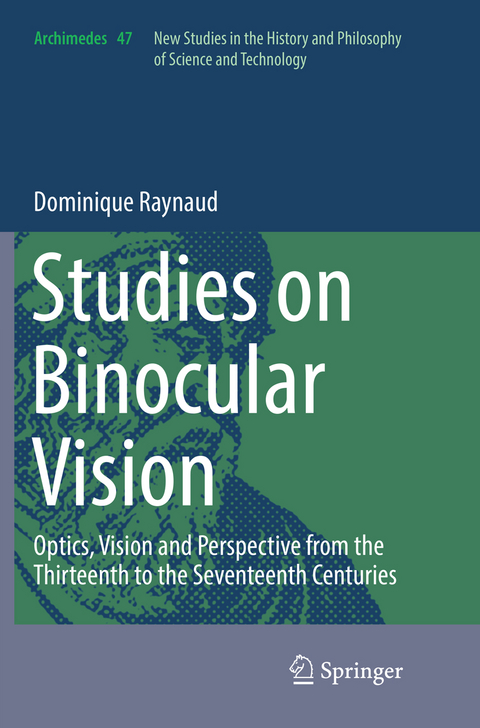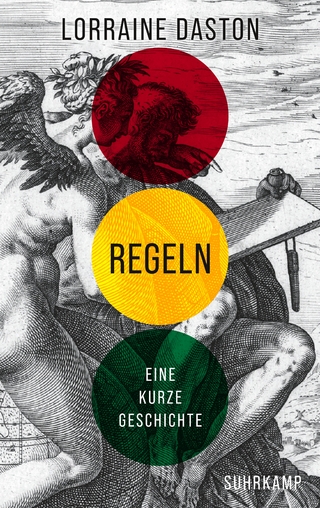
Studies on Binocular Vision
Springer International Publishing (Verlag)
978-3-319-82645-5 (ISBN)
This book clarifies the interrelationship between optics, vision and perspective before the Classical Age, examining binocularity in particular. The author shows how binocular vision was one of the key juncture points between the three concepts and readers will see how important it is to understand the approach that scholars once took. In the Middle Ages and the Renaissance, the concept of Perspectiva - the Latin word for optics - encompassed many areas of enquiry that had been viewed since antiquity as interconnected, but which afterwards were separated: optics was incorporated into the field of physics (i.e., physical and geometrical optics), vision came to be regarded as the sum of various psycho-physiological mechanisms involved in the way the eye operates (i.e., physiological optics and psychology of vision) and the word 'perspective' was reserved for the mathematical representation of the external world (i.e., linear perspective).
The author shows how this division, whichemerged as a result of the spread of the sciences in classical Europe, turns out to be an anachronism if we confront certain facts from the immediately preceding periods. It is essential to take into account the way medieval scholars posed the problem - which included all facets of the Latin word perspectiva - when exploring the events of this period. This book will appeal to a broad readership, from philosophers and historians of science, to those working in geometry, optics, ophthalmology and architecture.Dominique Raynaud is a science historian at the Université of Grenoble Alpes, France. He has published various articles and books in the field, among them are Optics and the Rise of Perspective. A Study in Network Knowledge Diffusion (Oxford, 2014) and Scientific Controversies. A Socio-historical Perspective on the Advancement of Science (New Brunswick, 2015).
1. Perspectiva Naturalis/Artificialis.- Part I. Errors.- 2. Knowledge and Beliefs Regarding Linear Perspective.- 3. Understanding Errors in Perspective.- 4. Fact and Fiction Regarding Masaccio's Trinity Fresco.- Part II. Theory.- 5. Ibn al-Haytham on Binocular Vision.- 6. The Legacy of Ibn al-Haytham.- 7. The Rejection of the Two-Point Perspective System.- Part III. Sifting the Hypotheses.- 8. The Properties of Two-Point Perspective.- 9. The Hauck-Panofsky Conjecture Regarding Curvilinear Perspective.- 10. The White-Carter Conjecture on Synthetic Perspective.- 11. De Mesa Hypothesis Regarding the Arithmetic Construction of Perspective.- Conclusion.- Appendix 1: Error Analysis and Perspective Reconstruction.- Appendix 2: Artwork Catalogue.- Appendix 3: Errors of Reconstruction.- Appendix 4: Calculus of the Vanishing Points.- Appendix 5: Plates.
Selected by Choice magazine as an Outstanding Academic Title for 2017
"Raynaud (science historian, Univ. of Grenoble Alpes, France) systematically examines themes connected to optics, linear perspective, and the theory of binocular vision, especially as these pertain to Renaissance art. ... The book makes an important contribution to the scholarship of Renaissance optics. Summing Up: Highly recommended. Graduate students, faculty, and professionals." (T. Timmons, Choice, Vol. 54 (10), June, 2017)
| Erscheint lt. Verlag | 14.6.2018 |
|---|---|
| Reihe/Serie | Archimedes |
| Zusatzinfo | XI, 297 p. 90 illus. |
| Verlagsort | Cham |
| Sprache | englisch |
| Maße | 155 x 235 mm |
| Gewicht | 480 g |
| Themenwelt | Naturwissenschaften |
| Schlagworte | Binocular Vision • Geometry • Linear Perspective • Optics • Vision |
| ISBN-10 | 3-319-82645-X / 331982645X |
| ISBN-13 | 978-3-319-82645-5 / 9783319826455 |
| Zustand | Neuware |
| Informationen gemäß Produktsicherheitsverordnung (GPSR) | |
| Haben Sie eine Frage zum Produkt? |
aus dem Bereich


